“Morris has told this tale a thousand times before. Many of his Capa stories have acquired the polish and rhythm of ritual incantations.” — Simon Kuper, Financial Times, May 31, 2013
To wrap up this series, let us review — in the light of what we know now — the participation in the inception and promulgation of the Capa D-Day myth of the members of what I have dubbed the “Capa Consortium”: Capa himself, TIME/LIFE Inc., Magnum Photos, the International Center of Photography (including Cornell Capa, Richard Whelan, and Cynthia Young), and John Morris. I’ll take those in order, starting with TIME/LIFE Inc.
However, to do so we have to note that the myth originated with Morris, picture editor for LIFE‘s London office on D-Day, the only eyewitness to ever go on record about the events that took place in LIFE‘s darkroom on the night of June 7, 1944. Apparently, Morris transmitted that story to the New York office with his rough edit of the D-Day images he’d gathered for the feature story that would appear in the June 19, 1944 issue of the magazine.
Aside from its initial publication of the best five of Capa’s mere ten exposures from Omaha Beach in that issue, with the exculpatory, misleading explanation that the remainder of his film had suffered seawater damage, and with several wrong captions that misled the world for decades, this publishing empire did not play any active role in furthering the Capa D-Day myth for many years. However, it’s a curious fact that the very first assertion that Capa had spent 90 minutes photographing on Omaha Beach but that mishandling in LIFE‘s darkroom had destroyed most of his negatives came just three months later in a publication that unquestionably, if implicitly, bore the TIME/LIFE seal of approval.
As previously noted, Capa himself almost immediately began spreading his tale of a greatly exaggerated timeline and an account of a darkroom disaster — in conversation with LIFE correspondent Charles Christian Wertenbaker (which Wertenbaker paraphrases in his September 1944 quickie book Invasion!), and in a private letter to his younger brother Cornell, who relayed it to John McNamara for use in his young-adult book Extra! U.S. War Correspondents in Action, published in early 1945. But at first Capa disseminated it only anecdotally, not going on the record with it in his own words.
I assume that Wertenbaker heard this tale from Capa rather than from Morris, since the latter had no reason to broadcast that version of the narrative and every motive to keep it in-house and under wraps. Capa could not have confided this to Wertenbaker when the correspondent conducted the interview with him quoted in the book, since that took place, according to the author, on June 9, shortly after Capa returned to Normandy — before he’d had any contact with Morris over the skimpy results he’d turned in from the assignment, and prior to seeing the D-Day issue of LIFE.
So I also assume that Capa relayed it to Wertenbaker sometime after they traveled together to London on July 11, during which sojourn Capa learned how Morris had managed the crisis caused by his handling of the D-Day assignment. Following immediately a passage (pp. 43-44) in which Wertenbaker quotes Capa directly about his Omaha Beach experience, Wertenbaker tells the darkroom-disaster story in his own words:
“Bob Capa had taken 79 pictures of the fighting on the beach. They were the only complete photographic record of the worst hours of the invasion. A careless dark-room assistant ruined all but seven of them.” (P. 44. Note that at this point Capa claimed to have exposed only two rolls of 35mm film on Easy Red, while simultaneously and contradictorily asserting that “I shoot for an hour and a half and then all my film is used up.”)
None of the contemporary reviews I dug up commented on the glaring discrepancy between this narrative and LIFE‘s claim in the D-Day issue that the loss of Capa’s negatives resulted from seawater damage. Not surprising; in the whirl of war-related events and reports thereof that mismatch would have struck most as a minor matter at best, had they even noticed.
C’est la guerre!
The making of Wertenbaker’s book rated news coverage in its own right. First came a short notice on May 17, 1944 in the New York Times under the rubric “Books — Authors”:
“Charles Wertenbaker, senior editor of Time, assigned by Time-Life to cover the forthcoming invasion, has signed a contract with D. Appleton-Century for a book entitled ‘Invasion.'”
Next, on June 18, 1944, under the rubric “Trade Gossip of Books and Authors,” this update:
“CHARLES WERTENBAKER, Time and Life correspondent overseas, is cabling back day-by-day round-ups on the invasion to Appleton-Century, where the cables are being edited and sent to the printer. As the plans now are, Wertenbaker’s ‘Invasion’ will be the first book on this subject.”
Under the rubric “Books — Authors” yet again, on August 10, 1944:
“Front-line action photographs by Robert Capa, Life photographer, will illustrate ‘Invasion!’ the story of the Normandy battle, by Charles Wertenbaker, Life and Time correspondent, which Appleton-Century will publish in September.”
On August 27 (under the variant rubric “Books-and-Authors”):
“Invasion. The race to publish the first book on the European invasion is ending, with Appleton-Century apparently the winnah. The book is ‘Invasion!’ by Charles Wertenbaker, Time and Life correspondent, with photographs by Life’s Robert Capa. To meet the publication date of Sept. 5, Appleton-Century is performing a sort of miracle of speed just when other publishers, handicapped by war shortages, are shamelessly postponing release dates from one month to the next. Only eight days (it usually takes a month or two) after the complete manuscript arrives from England, the book will be rolling off the presses.”
Despite that intense pressure Wertenbaker expertly cobbled the book together from reports of the invasion he’d published in LIFE and TIME, his field notes, and interviews such as the one he conducted with Capa (some of them with members of the high command), all connected by new passages. Notwithstanding its hurried production, the resulting slender volume received high praise.
On Sunday, September 3, 1944 the New York Times Book Review featured it in a glowing front-page encomium from military historian Major H. A. DeWeerd, “D-DAY AND THE DAYS AFTER; A Writer and a Photographer Combine to Tell the Great Story That Began June 6.”:
“Charles Wertenbaker and Robert Capa, editorial writer and photographer for Time and Life, set out to record the story of the greatest amphibious operation of all time — the invasion of Hitler’s Fortress Europe from the West. The publication of their book, less than three months after D-Day, is a journalistic feat worthy of the mighty events they witnessed. … When Robert Capa reached the beach he found himself and the troops around him pinned down to a narrow beachhead. Said the soldier next to him: ‘I see my old mother sitting on the porch waving my insurance policy.’ Capa made seventy-nine pictures of the fighting on his beach. ‘They were the only complete photographic record of the worst hours of the invasion. A careless darkroom assistant ruined all but seven of them.’ C’est la guerre!”
Here one can see the myth already beginning to spread. Speeding it on, hot on the heels of DeWeerd’s article came John Chamberlain’s Tuesday, September 5, 1944 “Books of the Times” weekday column, in which he repeated the story:
“Many of Capa’s photographs of the invasion were spoiled by a careless darkroom assistant. But the ones that were salvaged add their graphic testimony to Mr. Wertenbaker’s word pictures. The photograph that bears the caption ‘The Second Wave Hits the Beach” dispels any lingering idea that the invasion was easy.”
Presumably the book, priced at $2.50 hardbound, sold well, but as events rolled rapidly forward it disappeared in the flood of WWII-related books that had already begun.
•
Wertenbaker’s and Capa’s Invasion! doesn’t qualify as an official TIME/LIFE publication. However, its author, TIME‘s foreign editor and a senior correspondent for all the corporation’s magazines (LIFE and Fortune as well), well up the chain of command, would not likely have published anything that could conceivably roil the corporate waters.
Furthermore, the book used as its illustrations pictures by a celebrated photojournalist whose name appears on its on its cover and who gets described on the book’s title page as “LIFE Staff Photographer.” It also includes a credit to LIFE for permission to use Capa’s images. Given all that, publication without objection to this passage about the purported darkroom disaster suggests an institutional willingness to tolerate disclosure of a most unflattering version of the story, which not only lays the blame for the supposed loss of irretrievable historic images squarely at the feet of the magazine’s staff but unequivocally contradicts the account published in LIFE just three months earlier.
I hesitate to take this as signalling some formal decision by figures above Wertenbaker, Morris, and Capa to publicly accept responsibility for the presumed loss of Capa’s negatives. I find myself more inclined to believe that Wertenbaker took the darkroom-disaster fiction on faith when he heard it from Capa in London later that summer, and exercised his own judgment, deciding that it didn’t make their employer look all that bad but definitely served as a poignant anecdote for his book. Surely Capa was happy to see it in print, with Wertenbaker’s byline lending it great credibility.
Dying of colon cancer in Paris, Wertenbaker would take his own life in an assisted suicide in 1952. Capa died two years later. Thereafter only John Morris could conceivably shed light on whether Wertenbaker and Capa solicited permission for publication of this passage from anyone higher up the TIME/LIFE food chain or acted entirely on their own initiative. And Morris himself may never have known the answer to that, as he had no apparent role in the making of Invasion!
[Note: Only one of Capa’s ten 35mm exposures from June 6 on Omaha Beach appears in this book: his seventh exposure (negative no. 35), showing Demolition Unit 10 at work — captioned, significantly, “The second wave hits the beach.” The book’s designer also used a detail of this image for its cover. The other 15 images cover troops boarding in Weymouth, invasion preparations en route, scenes recorded as Capa left the beach, and photos made after he returned to Normandy on June 8.]
•
By the end of 1946 John Morris, Capa’s picture editor in LIFE‘s London office on D-Day, had moved on to work for Ladies Home Journal. Capa had returned to the States, which made him directly responsible to Wilson Hicks, since 1937 the chief picture editor in LIFE‘s New York office. With the creation of Magnum at last on the front burner, and only “soft” postwar assignments coming from Hicks, Capa resigned his lucrative staff position at LIFE in January 1947 to go freelance once more; he would remain independent till his death.
He may have made that choice in part so as not to bite the hand that fed him when his fictionalized memoir, Slightly Out of Focus, came out that fall, with its first formal, on-the-record claim directly from him that the magazine’s London staff had ruined his films:
“Seven days later [June 14] I learned that the pictures I had taken on ‘Easy Red’ were the best of the invasion. But the excited darkroom assistant, while drying the negatives, had turned on too much heat and the emulsions had melted and run down before the eyes of the London office. Out of one hundred and six pictures in all, only eight [sic] were salvaged. The captions under the heat-blurred pictures read that Capa’s hands were badly shaking.”
Note that Capa has now added a third roll to the two he initially claimed LIFE had ruined. In the event, LIFE magazine took no notice of the September 1947 publication of Slightly Out of Focus. (TIME gave it a lukewarm review, with no mention of the D-Day episode.) Perhaps if the book had become a bestseller, or if someone in Hollywood had optioned it as a film treatment (for which Capa had intended it), the magazine’s editors would have felt some need to respond in some way to the charge. But, receiving unenthusiastic reviews, the book didn’t sell particularly well, and Tinseltown didn’t bite, quashing Capa’s hopes of selling it as the basis for a movie. It quickly joined the ranks of books about a war that those who had lived through it worked hard to forget.
(Part 1 I 2)
•
(For an index of links to all posts in this series, click here.)



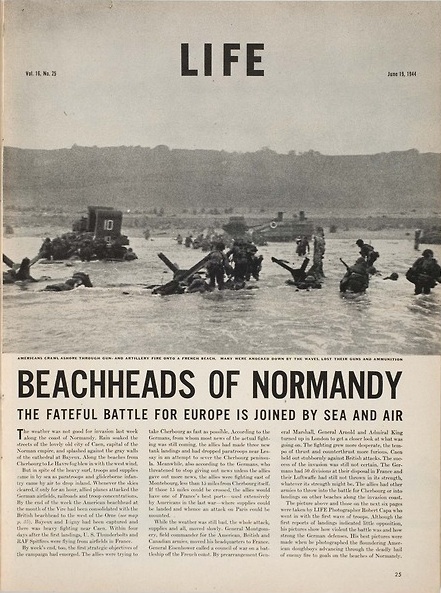
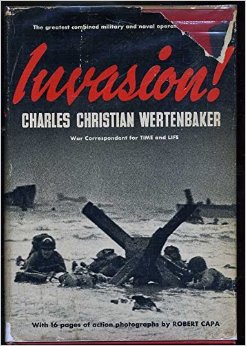
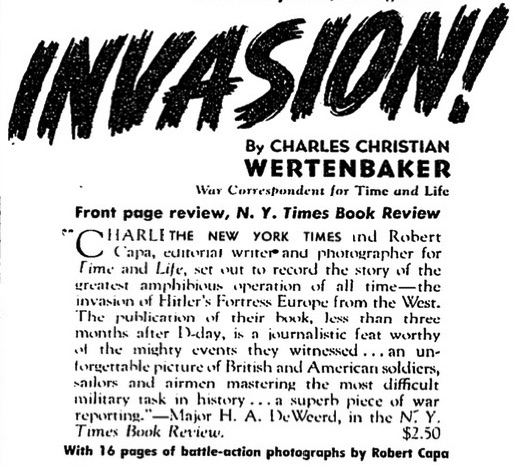
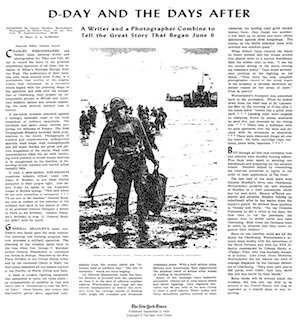
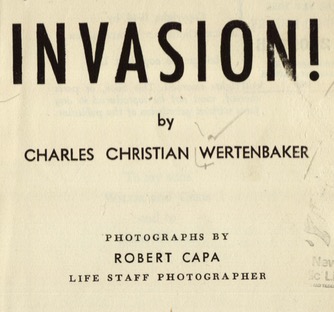
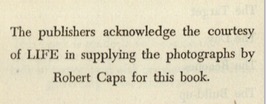
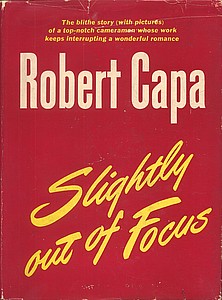
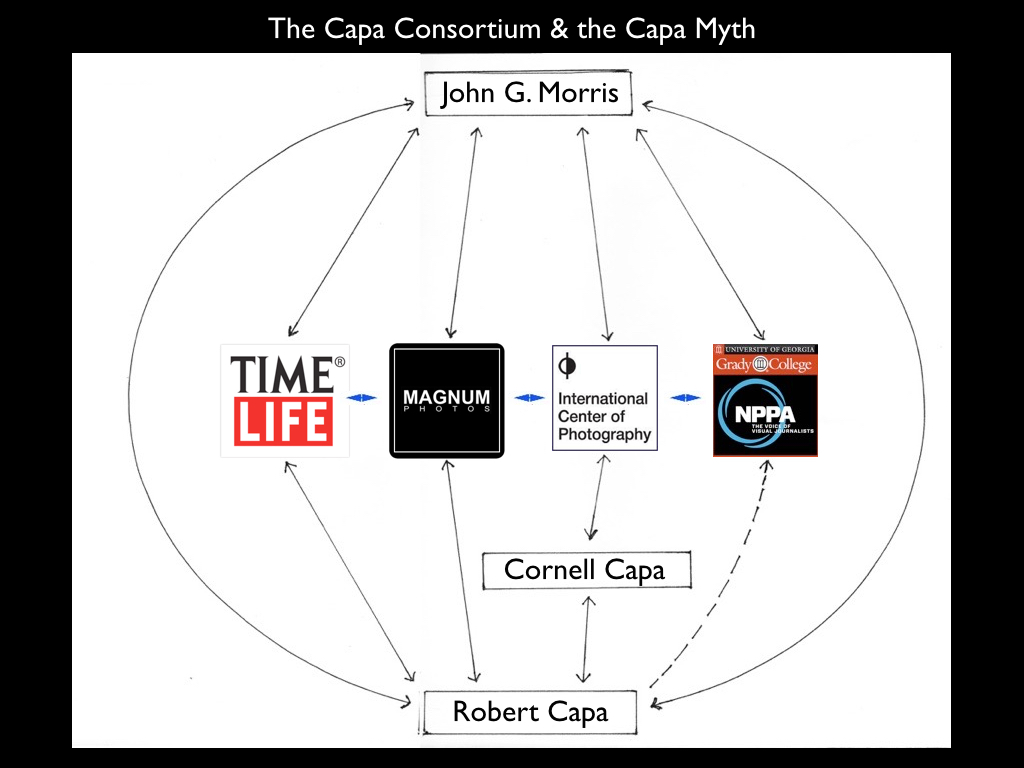




Leave a Comment